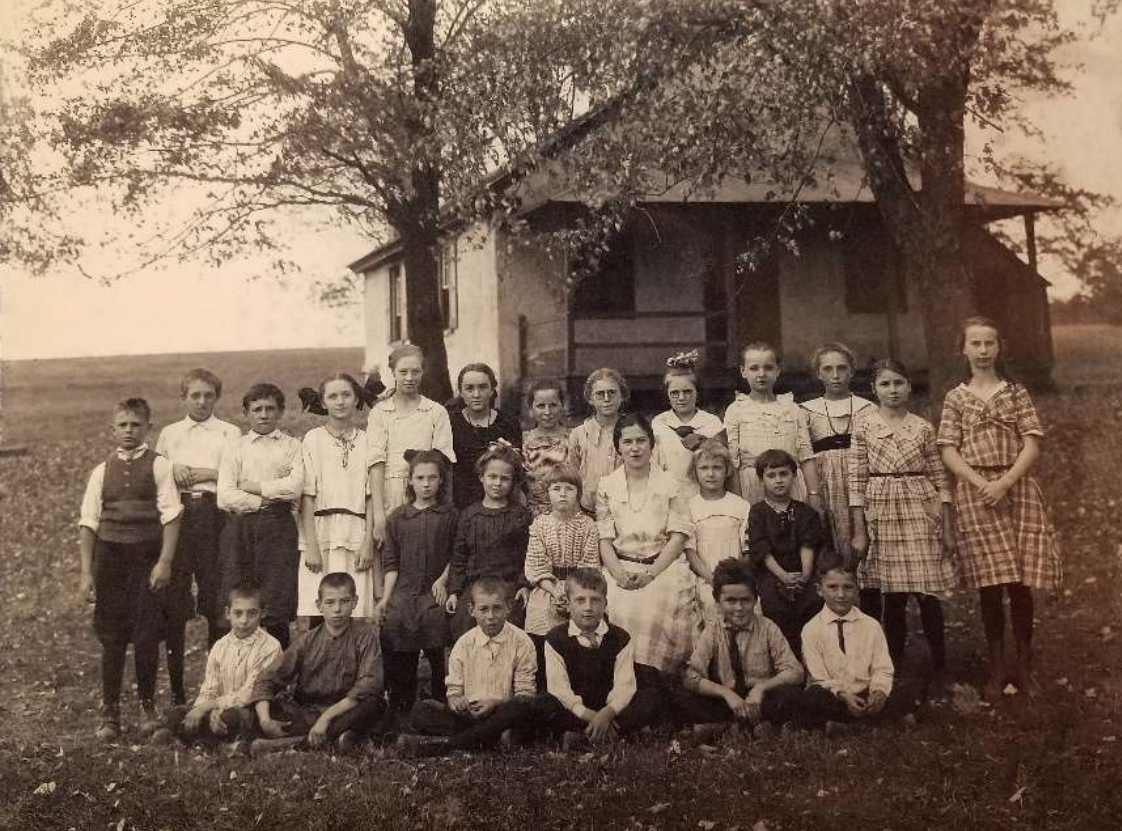The project to restore the County Line Road School House over the last 20 years represents a labor of love by community members who believe in the value of preserving history now and for future generations. This recent addition to Heritage Conservancy’s Register of Historic Places is noteworthy for more than its two centuries of educational heritage.
“I think it’s important to realize that this is how we grew up as a county and as a country,” says Ken Samen, Vice President of the Warrington Historical Society.
The group formed in 2007 with the mission to bring the circa-1858 structure back to life to educate the community and allow visitors to enjoy its acre of open space. And research provided a glimpse into a historical narrative beyond structural elements.
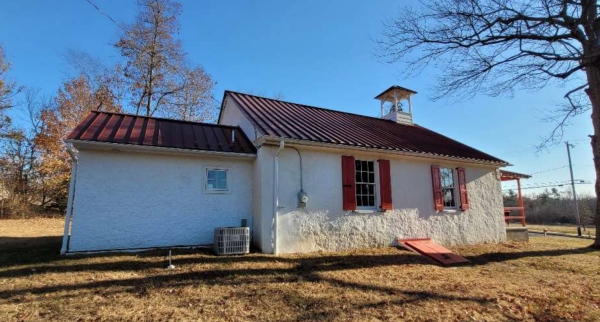
“People don’t realize how much we can learn from the teachers and students who passed through its doors,” says Ken.
In April 2025, Heritage Conservancy added County Line Road School House to a list of more than 700 properties on its Register of Historic Places. Senior Preservation Specialist Mary Lou McFarland reviewed the historical significance of the site.
“The amount of time and effort the Warrington Historical Society has dedicated to restoring the schoolhouse to its former glory is truly admirable,” says Mary Lou.
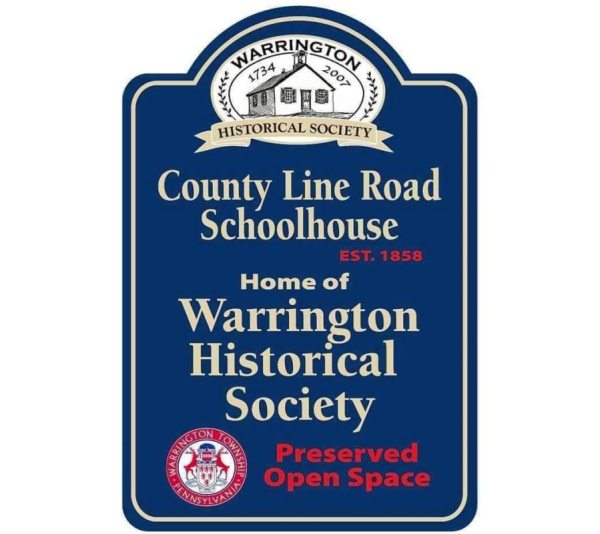
The Land and History
Records indicate William Penn owned the property (along with several thousand acres in Pennsylvania) after receiving a royal charter in 1681 from King Charles II of England to cover a debt. Warrington organized as a township in 1734.
In 1751, the owner of the 150-acre property, farmer Ephraim Leech, gifted one acre of land in his will for a schoolhouse, which was likely built around 1755.
An interesting bit of history surrounds what would become known as the William Penn Oak located on the property. During the 1930s, research about the size and age of the enormous white oak indicated it had been growing on the property for more than 200 years — during Penn’s lifetime. A storm in 2014 heavily damaged the tree and despite efforts to save it, the tree was taken down in 2018.
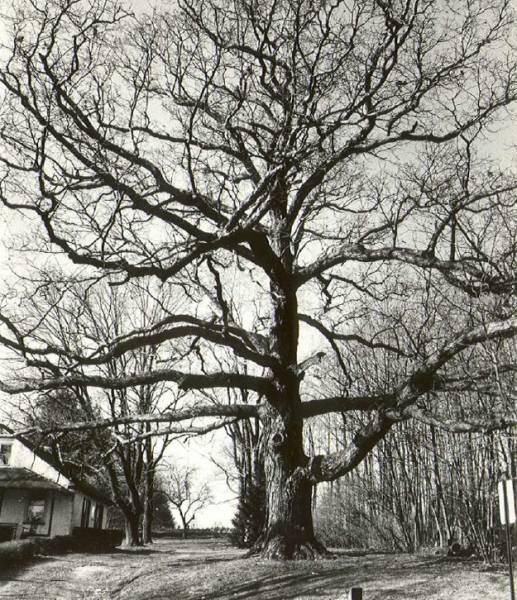
“I’m lucky I was able to see it,” says Ken. “It’s amazing to think about the number of children who would have played under that tree over all those years.”
Ken notes the property is also significant for its connection to Ulysses S. Grant, the 18th president of the United States. His grandfather and mother attended a prior version of today’s County Line School House located on the property. The family’s farm was located off County Line Road and Limekiln Pike in Montgomery County.
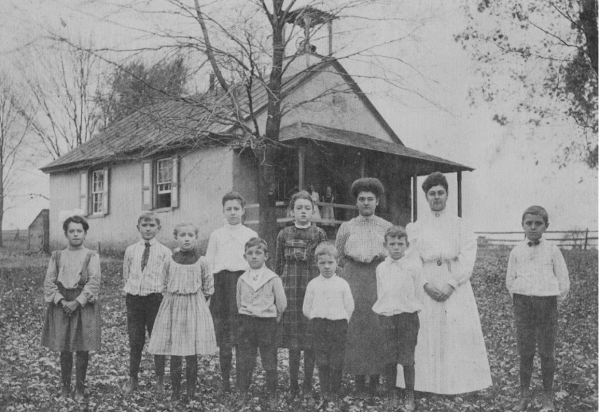
A True Nineteenth-Century Schoolhouse
In the mid-1800s the growth of the public school system — and the number of students — in Pennsylvania led to the construction of many one-room schools. This included the 1858 structure that now stands at 10 Folly Road, which was built according to state standards.
Characteristic of the era, the one-story schoolhouse had a wood shingle roof made of oak rafters. Historic white pebble-dashed stucco covers the exterior walls, constructed of area stone. A new red tin roof added in 1872 earned the school the local nickname of Red Top College. The double-door stone privy (outhouse) built around that time was also constructed of local stone. A belfry and bell were added around 1900.
The School District of Warrington Township had taken ownership of the County Line School House and one-acre property in 1859. It served as a school until 1928 when the two-room Mill Creek School opened. That year the Schlechter family purchased the property and made slight changes to the building for use as a summer retreat. In 1947 family members made other modifications for use as a year-round two-story residence. Warrington Township purchased the property and building in 1998.
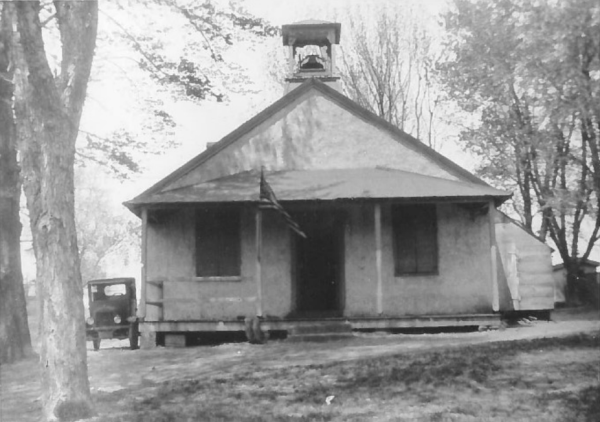
Transforming an Uncertain Future
Township plans to modify the building as a museum and offices for the historic commission hit a snag without funding for restorations. Eventually the school house deteriorated and faced possible demolition.
The Warrington Historical Society organized in 2007 to raise funds to renovate the site. The township granted $150,000 to the society in 2018 and an additional $110,000 in 2023 to help complete the restoration project, which included a handicapped-accessible addition.
“Technically it took us 20 years,” says Ken, who helped form the historical society in 2007. He spent many hours poring over old deeds in Philadelphia and documents housed at the Mercer Museum in Doylestown to help ensure the schoolhouse closely resembled its 1858 version.
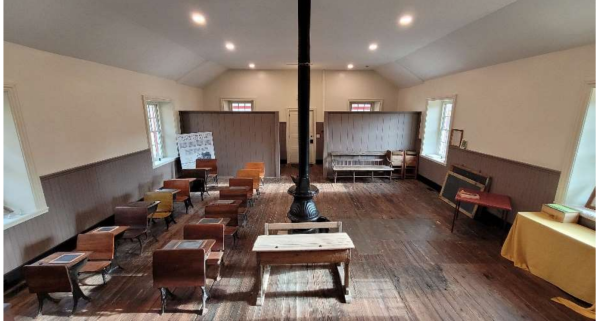
Adds Ken, “We tried to renovate it to match the times but still be able to use it as offices and be available to visitors today. It looks very similar to what the structure was.”
While the original schoolhouse did not have electricity or plumbing, renovations included modern comforts like heat and air conditioning. An accessible restroom, small kitchen, and storage were part of the 2024 addition. The renovation was a team effort aided by Scout troops and others who persevered through challenges like the COVID pandemic.
“A lot of people cared about the project and that made it worthwhile,” Ken says.
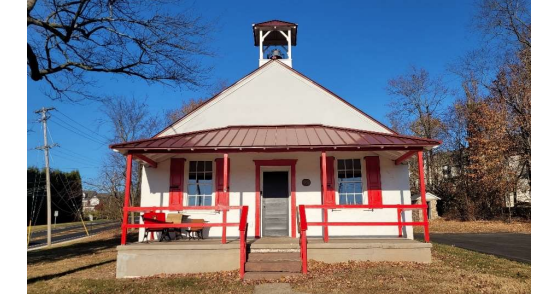
The School House Today
The Warrington Historical Commission and the Warrington Historical Society held their first official meetings at the schoolhouse in August 2024. The first public open house took place in October 2024.
“The community can use this one acre of open space as though it’s a park,” says Ken. “They can visit the school building when it’s open, and we are planning to install a picnic grove here in the fall.”
Prior to the pandemic, members of the historical society went to local elementary schools to share the history of the 1858 building and the thousands of students who attended during the 19th century. Ken likes to share details about the rules that governed teachers and public education, and the diversity of the student population. The goal now is to bring local students to the restored building. The group is raising funds to expand the driveway out to County Line Road to allow for buses.
“It is important to preserve buildings like this to teach present and future generations how students were educated in rural areas in the 19th century,” says Mary Lou.
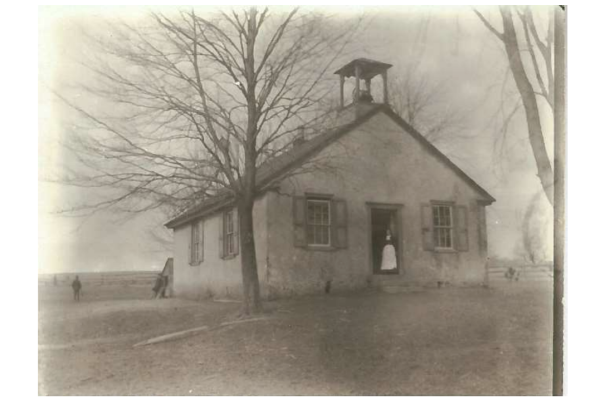
Being added to Heritage Conservancy’s Register of Historic Places was an important step in validating restoration efforts, says Ken. The County Line School House got another nod to its historic value recently by meeting eligibility criteria for listing in the National Register of Historic Places. Whether the site makes the official national list or not, Ken and the historical society want the community to enjoy and learn from the schoolhouse.
“We want to be seen,” he said. Visitors are welcome to explore the open space and enter the schoolhouse when it is in use by historical society members (look for cars outside). Four public open houses are held each year; the next will be Saturday, July 26, 2025 from 10 a.m. to 2 p.m. rain or shine. Find more information on Facebook.
